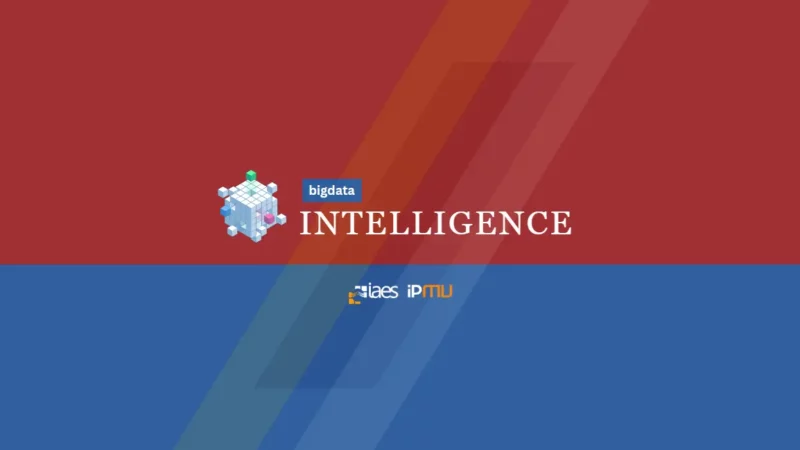Greetings, fellow Nawala! May you always be in good health.
This is the IAES Nawala of the Institute of Advanced Engineering and Science. This is the IAES Newsletter of the Institute of Advanced Engineering and Science. Today we will be sharing news about Bigdata technology. Bigdata intelligence involves utilizing data analytics, machine learning, and artificial intelligence to process and analyze very large data sets to gain insights and knowledge. These insights can be used to make data-driven decisions, discover patterns, and predict future outcomes. Fitrianah and Wangsa (2022) classified data to predict skin problems through skin care. The results obtained from the study can be seen in:
Devi Fitrianah, Andre Hangga Wangsa
There are numerous types of skincare, each with its own set of benefits based on key ingredients. This may be difficult for beginners who are purchasing skincare for the first time due to a lack of knowledge about skincare and their own skin concerns. Hence, based on this problem, it is possible to find out the right skin concern that can be handled in each skincare product automatically by multi-class text classification. The purpose of this research is to build a deep learning model capable of predicting skin concerns that each skincare product can treat. By comparing the performance and results of predicting the correct skin condition for each skincare product description using both long short-term memory (LSTM) and bidirectional long short-term memory (Bi-LSTM), The best results are given by Bi-LSTM, which has an accuracy score of 98.04% and a loss score of 19.19%. Meanwhile, LSTM results have an accuracy score of 94.12% and a loss score of 19.91%.
Bigdata refers to large and complex data sets. In addition to data on skin health problems, handwriting data can also be classified to predict a person’s personality. Remaida et al. (2023) conducted research related to predicting a person’s personality based on handwriting patterns. The full results of the study can be seen in the following article:
Application of artificial neural networks for personality traits prediction based on handwriting
Ahmed Remaida, Benyoussef Abdellaoui, Mohamed Amine Lafraxo, Zineb Sabri, Hamza Nouib, Younes El Bouzekri El Idrissi, Aniss Moumen
The automatization of personality traits prediction still brings considerable research these days, especially when the detection could be achieved without administrating personality assessment instruments. With the evolution of computational intelligence, a variety of deep machine learning techniques were developed and proposed for that purpose. Nevertheless, proposing robust and rapid systems to solve this problem remains a challenging task. The process of feature extraction is the main key. This paper presents an effective method for extracting five graphological features from handwriting ensuring the prediction of personality traits based on the big five personality traits model. We started by collecting both handwriting samples and big five questionnaires, then the feature extraction process, after that the data preparation and finished with the application of several popular deep machine learning models to achieve the prediction. Experimental results indicate the remarkable performance of the multi-layer perceptron (MLP) compared to other classifiers, the model was 100% precise and classification accuracy attained 100% for trained data and 72.73% for new tested data. With only 100 participants, we strongly believe that our proposed method is simple and promising, and better results will be attained with a larger dataset.
Sentiment analysis is a technique that uses Bigdata as a data source to determine the sentiment or emotion expressed in a text or writing. The purpose of this technique is to identify subjective information from a text, whether the opinion in the text is negative, neutral, or positive. Guha and Sutikno (2022) raised natural language understanding which is a development of natural language processing (NLP) as a solution to provide more accurate results from sentiment analysis. A more detailed explanation of the research can be seen in the following article:
Natural language understanding challenges for sentiment analysis tasks and deep learning solutions
Radha Guha, Tole Sutikno
When it comes to purchasing a product or attending an event, most people want to know what others think about it first. To construct a recommendation system, a user’s likeness of a product can be measured numerically, such as a five-star rating or a binary like or dislike rating. If you don’t have a numerical rating system, the product review text can still be used to make recommendations. Natural language comprehension is a branch of computer science that aims to make machines capable of natural language understanding (NLU). Negative, neutral, or positive sentiment analysis (SA) or opinion mining (OM) is an algorithmic method for automatically determining the polarity of comments and reviews based on their content. Emotional intelligence relies on text categorization to work. In the age of big data, there are countless ways to use sentiment analysis, yet SA remains a challenge. As a result of its enormous importance, sentiment analysis is a hotly debated topic in the commercial world as well as academic circles. When it comes to sentiment analysis tasks and text categorization, classical machine learning and newer deep learning algorithms are at the cutting edge of current technology.
Some of the articles above are a small part of the research on Bigdata technology. To get more information, readers can visit the page and read articles for FREE through the following links: https://iaesprime.com/index.php/csit/, https://ijeecs.iaescore.com/, and https://ijict.iaescore.com/.
By: I. Busthomi
Editor: S. D. Cahyo

